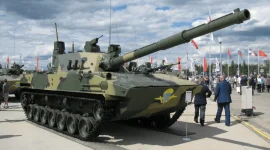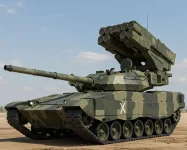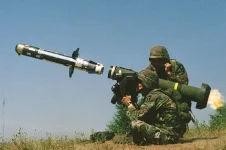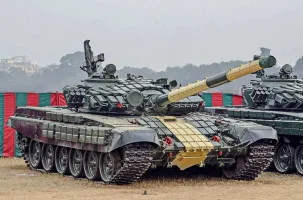- Views: 6K
- Replies: 23
In a notable shift in India’s defence procurement strategy, the Indian Army has recommended that the Ministry of Defence (MoD) reconsider its plans to acquire Stryker Armored Personnel Carriers (APCs) from the United States. This recommendation follows unsatisfactory performance by the American vehicle during high-altitude trials.
The Army is now advocating for an enhanced indigenous alternative, the Advanced Armoured Platform (AAP) Wheeled, a new version of the Wheeled Armoured Platform (WhAP) 8×8, developed through a collaboration between the Defence Research and Development Organisation (DRDO) and Indian private sector defence firms.
The Stryker, an 8×8 wheeled infantry fighting vehicle produced by General Dynamics Land Systems, was initially considered for acquisition via a government-to-government agreement with the U.S. However, trials conducted in demanding high-altitude conditions, such as those found in Ladakh, revealed significant operational deficiencies.
The vehicle, powered by a Caterpillar C7 engine reportedly in the 300-360 hp range, struggled to perform adequately in mountainous regions. This capability is crucial for India, given its sensitive border areas and ongoing territorial disputes.
Reports emerging around February 2025, following trials in late 2024, indicated that the Stryker did not meet the Army's stringent requirements. Its design, optimized for U.S. expeditionary warfare, reportedly lacked the logistical suitability for India’s diverse and rugged operational landscapes. Some reports suggested a potential engine upgrade to 600hp was offered by the manufacturer for re-trials.
The Indian Army’s comprehensive evaluation process clearly identified the Stryker's limitations. This outcome has drawn attention from defence analysts, with some questioning the MoD's initial consideration of the foreign platform, particularly given the subsequent trial results.
The situation has also amplified the ongoing national emphasis on self-reliant defence production, as opting for the Stryker would have directed significant funds to overseas contractors for a platform deemed less suitable than domestically developed options.
In a strong display of indigenous capability, the DRDO, working closely with prominent private sector partners such as Tata Advanced Systems and Bharat Forge, has initiated the development of the AAP Wheeled variant.
This platform is an upgraded version of the existing WhAP 8×8. A significant step in this indigenous defence innovation was the metal-cutting ceremony for the AAP prototypes (both wheeled and tracked versions), which took place on April 2, 2025, at Tata’s facility in Pune, with a projected rollout by October 2025.
The original WhAP, which is already in limited service with the Indian Army and paramilitary forces, has demonstrated its capabilities in challenging environments, including high-altitude operations in Ladakh and amphibious warfare scenarios.
The forthcoming AAP Wheeled variant is engineered to build upon the proven strengths of the WhAP. It promises enhanced modularity, scalability, and reconfigurability, making it adaptable for a wide array of combat roles.
Designed with robust steel armour plates and lightweight composite materials, the AAP is specifically tailored for Indian operational conditions. It is expected to offer superior all-terrain mobility, enhanced mine blast protection, and the capacity to integrate advanced weapon systems, including anti-tank guided missiles (ATGMs).
A key aspect of its development is the emphasis on local sourcing, with over 80% of its components being indigenous, directly contributing to the "Atmanirbhar Bharat" policy and reducing reliance on foreign military hardware.
The Indian Army is reportedly moving forward with the procurement of 198 units of the WhAP under the Buy (Indian-IDDM - Indigenously Designed, Developed and Manufactured) category. Platforms like Tata’s Kestrel (a WhAP derivative) and a wheeled armoured platform from Mahindra are considered leading contenders for this requirement, effectively diminishing the prospects for the Stryker.
The development and prioritisation of the AAP underscore the Army’s commitment to fielding a versatile, locally manufactured platform capable of addressing the complex demands of modern warfare, particularly in light of prevailing border security challenges.






